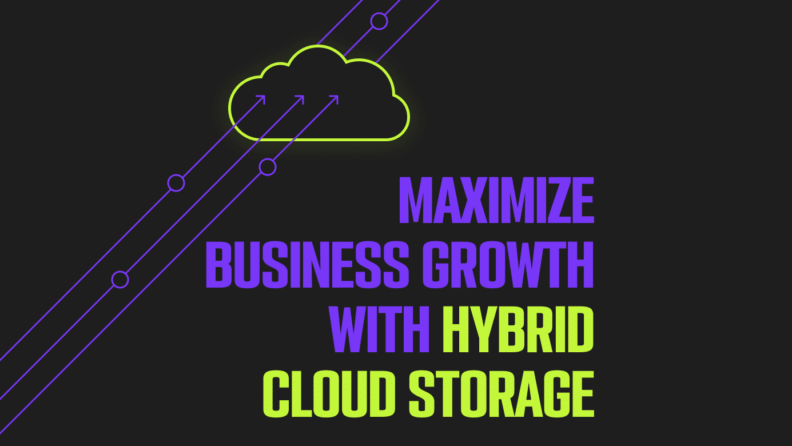Hybrid cloud storage combines local and remote resources for data management, enhancing internal storage with public cloud services. This infrastructure employs policy engines to retain frequently accessed data on-premises while seamlessly transferring less active data to the cloud.
CTOs bear the responsibility of balancing the demands for performance, security, and cost-effectiveness within IT infrastructure, and hybrid cloud storage presents a winning solution for many organizations.
A staggering 50.2% of enterprises have already embraced hybrid clouds for data storage. That's a clear testament to its effectiveness.
What Is Hybrid Cloud Storage?
Hybrid cloud storage is a combined approach to storing digital data across multiple locations, including both on-premises infrastructure and the public cloud. It offers the flexibility for you to strategically determine where your data lives based on your unique needs.
What sets a hybrid cloud storage service apart from other cloud storage solutions is its versatility. Traditional cloud storage relies solely on servers with remote access, while hybrid cloud storage lets you keep certain data on your local infrastructure. All the rest goes into the cloud. It grants you the power of choice, enabling you to optimize accessibility, security, and cost-effectiveness.
Why Should You Care?
CTOs hold the keys to their organization's technological future. When it comes to data storage, the stakes are high, with negative business impacts likely if important data becomes lost, damaged, or out-of-sync. That's where hybrid cloud storage comes in, offering myriad benefits tailored to your needs.
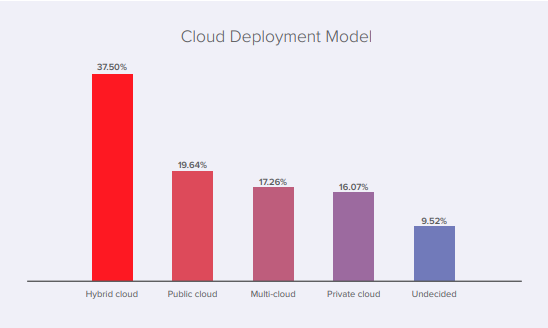
According to the annual Denodo Global Cloud Survey Report 2022, hybrid cloud is the leading cloud adoption model for 37.5% of respondents. This makes it the top choice for the third year running.
It remains the top choice because hybrid cloud storage services provide:
- Flexibility and scalability: Adding a dynamic cloud component on top of your on-premise infrastructure makes it drastically easier to scale storage capacity to fit your company’s changing needs. You can scale up or down to accommodate demand spikes and support new projects.
- Cost-efficiency: Having both on-premise and cloud options allows you to optimize resource usage to avoid unnecessary expenses strategically. Pay-as-you-go models cut upfront capital investments, reduce maintenance costs, and scale down quickly if demand decreases.
- Public and private clouds: You can combine security, control, and scalability by leveraging multiple storage solutions. Store sensitive data securely on your private, on-premise cloud while leveraging public cloud resources for innovative applications like agile cloud-native development and SaaS delivery.
Business Impact and Strategic Value
Competition in the digital realm is fierce, so staying ahead of the curve isn't just a goal — it's a necessity. Hybrid cloud storage is one of the tools that might help your business operate more efficiently and level the playing field, particularly as new technology becomes more affordable and accessible to even the smallest businesses.
A recent study by IBM revealed that a whopping 71% of IT leaders believe that a solid hybrid cloud strategy is crucial to fully realizing the potential of a digital transformation. Let that sink in for a moment. If you’re not already evaluating whether you may need a hybrid cloud solution, then you’re already behind the curve.
Accelerating Innovation with Hybrid Cloud Storage
How does a hybrid cloud implementation become a tool for accelerated innovation and digital transformation? Let me elaborate:
Agility at Hyperspeed
Hybrid cloud storage offers unrivaled agility to adapt to market demands in near-real-time. This is because scaling your storage and computing resources in the cloud happens at lightning speed, with the ability to spin up new instances in a few clicks or even through automation.
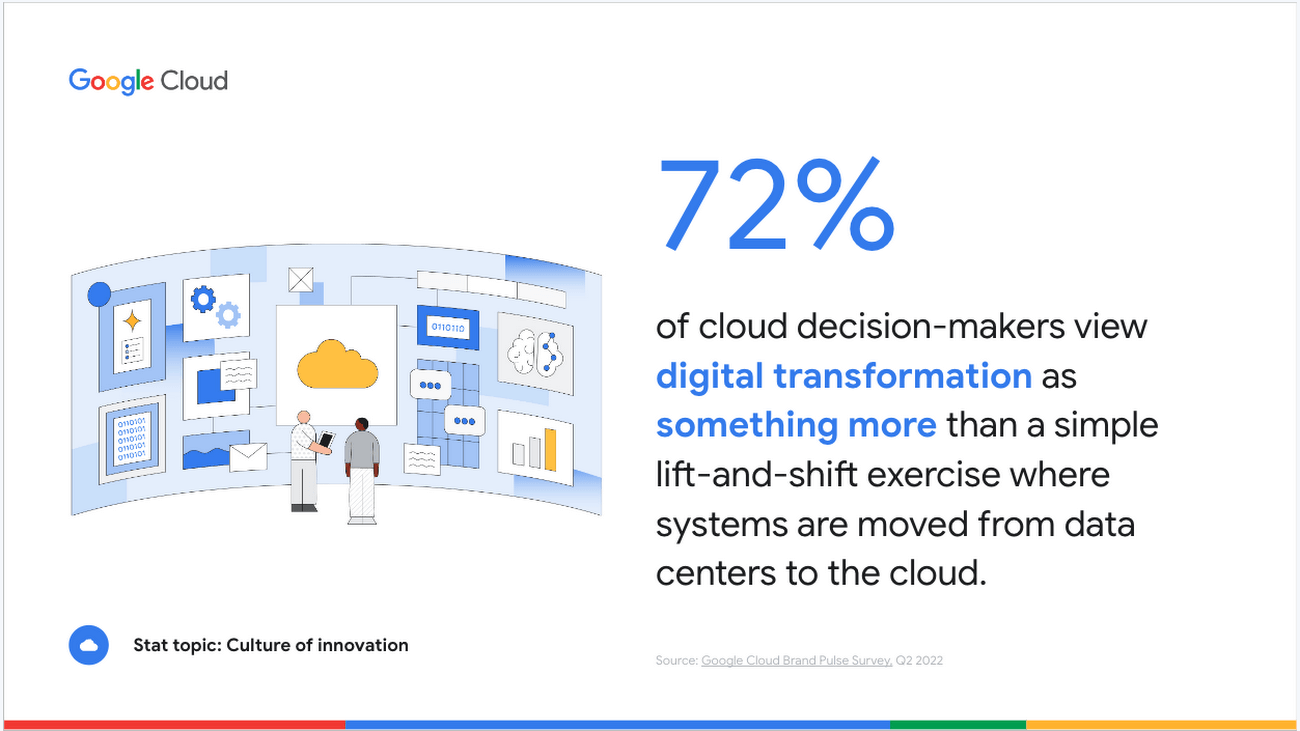
This level of nimbleness allows you to seize new opportunities, react swiftly to customer demands, and outpace your competitors in the race to success.
Breaking Down Silos, Igniting Collaboration
Gone are the days of isolated departments and fragmented workflows. Hybrid cloud storage lowers barriers to data access and fosters collaboration among your teams. Developers can leverage cloud-based resources to innovate and experiment. This collaboration fuels your organization's ability to transform ideas into reality and drive innovation to new heights. And this can be done securely as IT teams maintain control over critical data, with security provisions customized for cloud and local use cases.
Unleashing the Power of Data
All sales are ultimately driven by answering a simple question: what do people want, and how can you satisfy that want? Any data that helps answer that question is inherently valuable, and hybrid cloud storage can help you unlock the hidden potential of your data.
Firstly, you’ll have access to the limitless flexible storage for the biggest of big data operations. Secondly, many public cloud providers offer excellent native tools and integrations for data collection and analytics. This newfound power can enable you to make informed decisions, personalize customer experiences, and uncover untapped revenue streams.
Resilience in the Face of Adversity
Every business faces challenges, but hybrid cloud storage equips you with an unrivaled level of resilience. By distributing your data and applications across multiple cloud environments, you create a robust failsafe against downtime and data loss.
When issues occur, a distributed architecture can help you bounce back swiftly, maintain business continuity, and ensure your customers' trust does not waver.
Hybrid Cloud Storage Solutions in Action
To better understand the benefits of hybrid cloud storage, let's move from the theoretical to the practical. These use cases show how top organizations worldwide employ hybrid cloud storage software to drive cost savings and growth.
HSBC and Google Anthos
HSBC, one of the world's leading banking institutions, employs a hybrid cloud model using Google Cloud's Anthos and their own private cloud. The key objective of this decision was to improve operational efficiency while providing rigorous data security.
In this model, Google Anthos handles workload management, aiding in serving millions of global customers effectively. The private cloud, on the other hand, is reserved for storing sensitive financial data, a necessity due to the banking sector's stringent data privacy regulations.
HSBC's hybrid strategy demonstrates how a hybrid cloud model can drive innovation, maintain data privacy, and enhance operational efficiency.
The Masters Tournament and IBM
The Masters Tournament employs a hybrid cloud model with IBM's public cloud storage services and a private cloud. They aimed to manage the tremendous, yet transient, demand during the tournament while securely housing decades of historical data. Through IBM, the Masters efficiently scales resources to accommodate the surge in web traffic during the event.
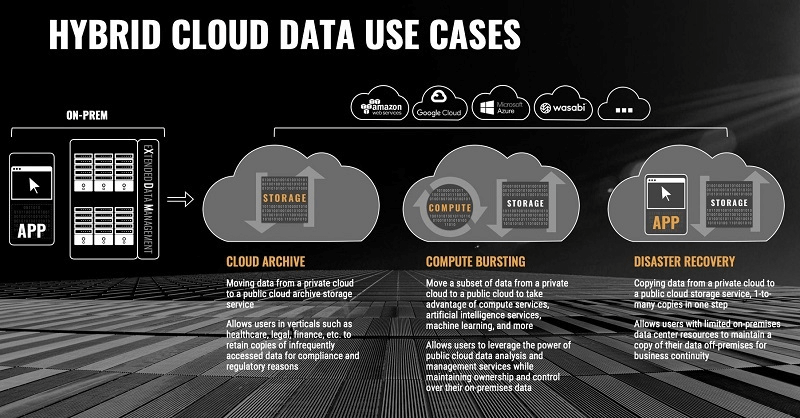
Their private cloud preserves valuable historical data and is accessible year-round. This strategy has led to almost perfect uptime during the tournament, illustrating how a thoughtfully executed hybrid cloud strategy can significantly enhance operational efficiency and user experience.
Netflix and Amazon Web Services (AWS)
Entertainment behemoth Netflix leverages a hybrid cloud model as well. They employ Amazon Web Services (AWS) for their vast data storage, computation, and analytics needs, and they maintain a specialized private cloud called Open Connect for content delivery.
The need drove their adoption of this strategy to efficiently manage an immense global audience and ensure robust, high-quality content delivery. The outcome of Netflix's hybrid cloud strategy has been exceptional.
The proof lies in their reported uptime of 99.97%, guaranteeing an uninterrupted user experience for millions worldwide. This approach, combining public and private cloud resources effectively, demonstrates how a well-devised cloud strategy can significantly enhance service availability and user experience.
BP and Microsoft Azure
British Petroleum (BP) capitalizes on a hybrid cloud strategy by running a Microsoft Azure public cloud for data processing and analytics. Alongside this, BP continues to run its own private cloud for operations with location-specific requirements for security and data sovereignty. This setup enables BP to fulfill a crucial goal: maintaining data compliance amidst the intricate web of global regulations in the energy sector.
BP's hybrid strategy has garnered impressive business benefits. BP has seen a 40-fold increase in processing speed and a 40% reduction in operational costs. All because they assigned substantial data processing tasks to Azure. It's a vivid example of how a strategically designed hybrid cloud system can optimize efficiency and contribute to cost savings.
Bridging Cloud Environments
When embarking on the journey to hybrid cloud storage, several key technical aspects warrant your attention. Let's explore compatibility, interoperability, and data exchange — three technical considerations crucial to your hybrid cloud success.
1. Compatibility
Compatibility is the ability of your various software solutions to function together effectively. Not all clouds are created equal, and it's important to ensure your chosen systems work together harmoniously.
- First, consider the technologies you're already using. If you're heavily invested in a particular technology stack, you'll want a cloud service that supports it. Consider: what integrations are available? Are they native and pre-build? How does this provider support and streamline the cloud migration process?
- Look for a public cloud service that complements your existing on-premise data center capabilities. Remember, it's not about finding the "best" cloud service — it's about finding the right one for you.
2. Interoperability
How well do your chosen systems play together in the sandbox? Interoperability refers to moving workloads and data across different cloud environments without significant reconfiguration or retooling.
- Look for cloud services that support open standards. This can provide a degree of interoperability and help avoid vendor lock-in.
- Evaluate your potential public cloud service's track record of working with other private cloud environments. Does it play nice with others?
3. Data Exchange
Moving data is like herding cats — it can be unpredictable and tricky to manage. The exchange of data between your private and public clouds needs to be efficient, secure, and cost-effective.
- Consider data transfer costs. Some public cloud providers charge for data ingress and egress. Keep this in mind as you evaluate potential solutions—some businesses will opt to use a cloud migration solution, which comes with its own cost.
- Look at network performance. Data exchange is a two-way street. Both upload and download speeds can impact your hybrid cloud's performance.
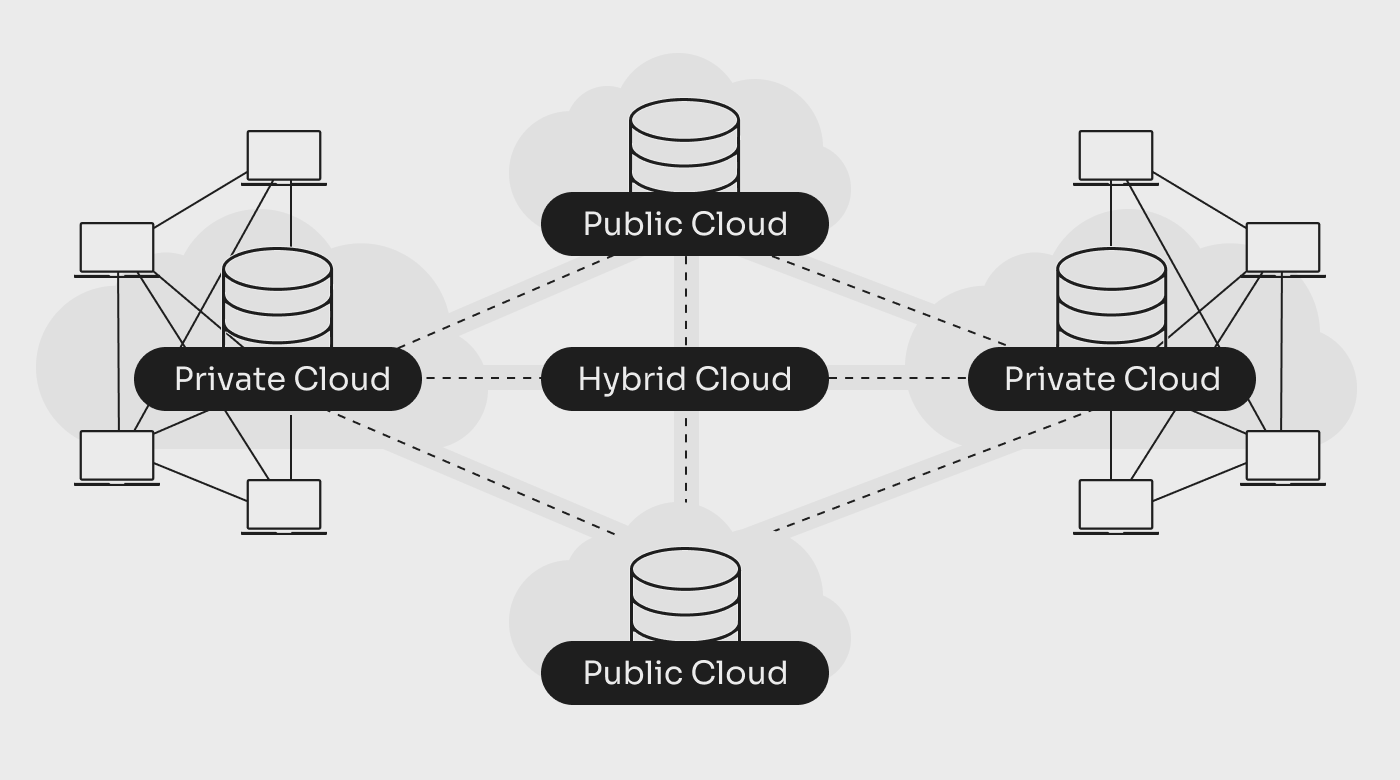
There you have it—three destinations on the roadmap to hybrid cloud storage success. Remember, the journey of a thousand miles begins with a single step. In this case, the first step is understanding these key technical considerations.
Securing Your Hybrid Cloud Environment
1. Data Protection
First up, data protection, the proverbial "seatbelt" for your data's safety ride. Data protection involves safeguarding your data from loss, theft, or damage and implementing cloud backup services and recovery strategies.
- Factor in redundancy. Make sure your data is backed up and easily recoverable in case of any unforeseen circumstances.
- Determine how your cloud provider can help with disaster recovery. What mechanisms are in place to restore your operations quickly and efficiently?
2. Encryption
Encryption is the process of converting data into code to prevent unauthorized access. Think of it as the secret decoder ring of the data world. Sensitive data should always be encrypted.
- Consider both sides of the encryption coin: data at rest (stored data) and data in transit (data being moved).
- Understand your cloud provider's encryption protocols. Are they using the most secure and up-to-date standards?
3. Access Controls
Like bouncers at a posh nightclub, access controls regulate who gets in and out of your data systems.
- Use identity and access management (IAM) solutions to control who can access your data.
- Regularly review and update access privileges to ensure only the necessary individuals have access.
4. Regulatory Compliance
Finally, we arrive at regulatory compliance, the rulebook for your data handling operations. Different industries and countries have specific regulations around data storage, so it's crucial to ensure compliance.
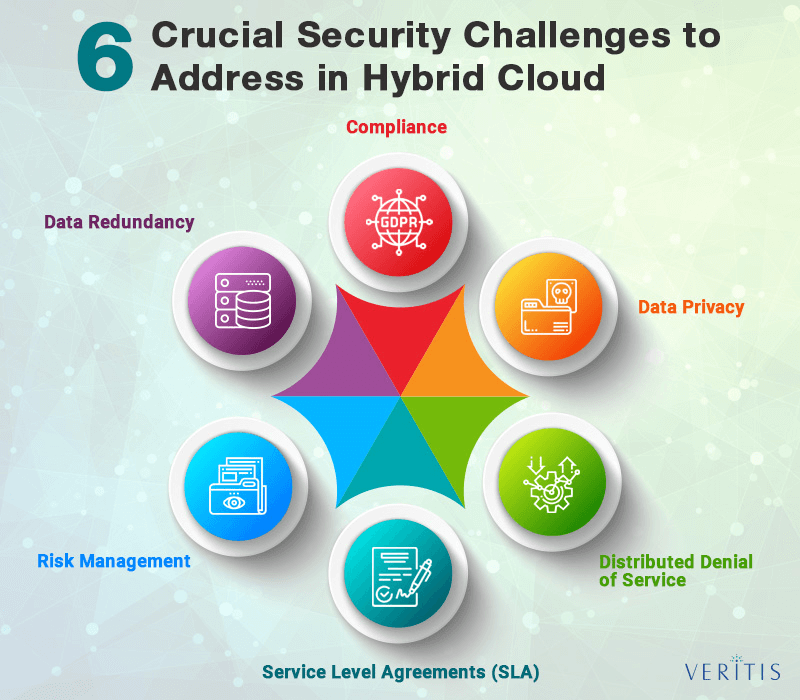
- Understand the specific regulations of your industry and country. GDPR, CCPA, and HIPAA are a few examples.
- Ascertain how your cloud provider can aid you in staying compliant.
Strategize for the Future in Hybrid Cloud Storage
When thinking of hybrid cloud storage, think of it like your favorite pair of stretchy pants. You want room for growth and the ability to stay trendy. Let's explore the concepts of scalability and future-proofing in these terms.
1. Scalability
Scalability is the tech equivalent of stretching comfortably. It's about effortlessly expanding or contracting your resources based on your business needs.
- Plan for growth. Understand how quickly and easily you can scale up (or down) your resources with your hybrid cloud provider. Will your operations stretch smoothly, or will they rip at the seams?
- Align scalability with cost. As you scale, how will your cloud costs change? Find a balance between scaling resources and managing expenditures.
2. Future-Proofing
Make sure your hybrid cloud approach stays relevant as technology trends change. It's the equivalent of pulling out a paper map to navigate instead of relying on a real-time GPS.
- Stay flexible. Hybrid cloud storage is inherently flexible, but choosing a provider that supports integration with new and emerging technologies keeps you current.
- Think long-term. Consider your long-term business strategies and how your hybrid cloud solution will support these.
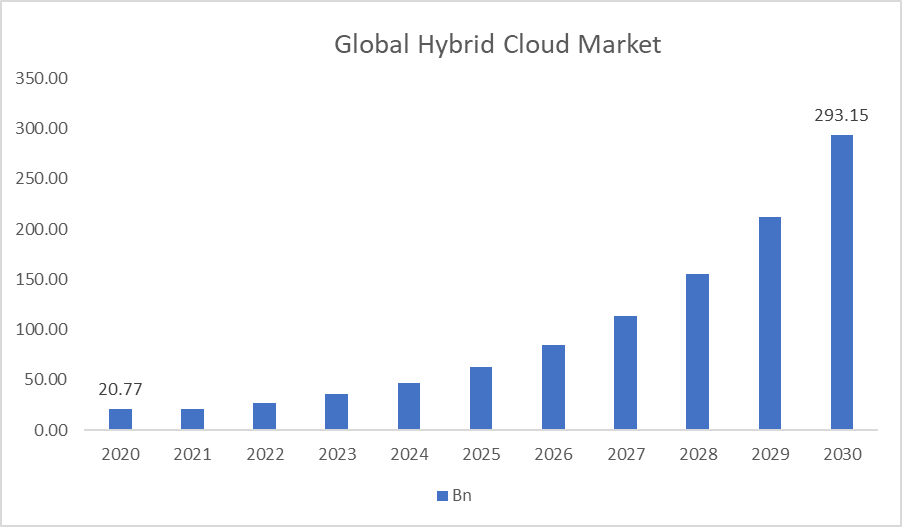
By addressing scalability and future-proofing, you're setting yourself up for success. Your hybrid cloud storage solutions can grow with you and remain evergreen.
Hybrid Cloud Storage Best Practices
Planning And Designing A Hybrid Cloud Storage Architecture
Planning and designing your hybrid cloud storage architecture is akin to assembling an intricate puzzle, with every piece carefully considered to construct the complete image. I'm here to guide you through this elaborate process, where careful planning and strategic decisions lay the groundwork for an efficient, scalable, and secure architecture.
1. Define Your Objectives
First off, know what you're aiming for. Is it cost efficiency, scalability, compliance, data security, or all of the above? Your objectives will inform your subsequent decisions.
- Articulate your strategic goals. This might require engaging with various stakeholders across your organization.
- Match these goals with specific cloud capabilities. These will be your guiding lights throughout the design process.
2. Assess Workload Requirements
Different workloads demand different environments. Some thrive in a public cloud infrastructure, others on a private cloud platform, and some need a mix of both.
- Understand the needs of each workload. Does it demand high performance, low latency, data locality, or other specific requirements?
- Match each workload to the best environment. Public, private, or a hybrid mix?
3. Select Appropriate Cloud Providers
Not all cloud providers are created equal. You need to find the right partner that aligns with your needs.
- Consider the services offered, cloud locations, performance, security, compliance capabilities, and customer support.
- Negotiate Service Level Agreements (SLAs) that best fit your objectives and requirements.
4. Determine Data Placement and Storage
Data is the lifeblood of your organization. Deciding where and how it's stored is critical.
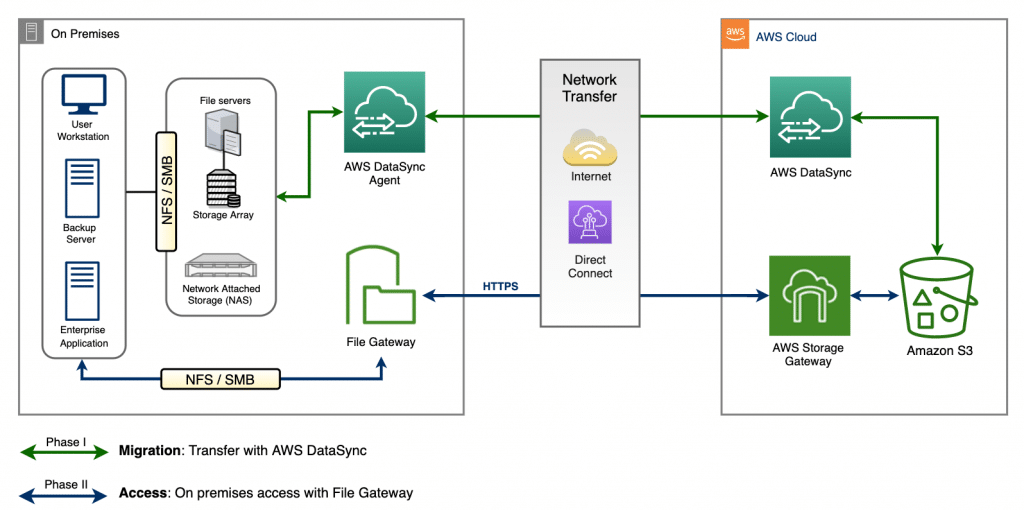
- Consider data accessibility, security, and compliance requirements.
- Choose appropriate storage services. Object storage, block storage, or file storage, anyone?
5. Ensure Reliable Network Connectivity and Bandwidth
In a hybrid cloud environment, robust network connectivity is non-negotiable.
- Secure, reliable, and redundant network connections between your on-premises data centers and cloud environments.
- Assess your bandwidth needs. Nothing spoils the cloud experience like a slow data transfer rate.
6. Address Data Integration and Interoperability
Your data needs to flow freely and safely between different cloud environments.
- Implement robust data integration solutions.
- Make sure systems and applications in different environments can communicate and work together.
7. Implement Robust Security and Compliance Measures
Let's face it: security and compliance are critical.
- Incorporate strong access control, encryption, intrusion detection, and other security measures. Consider a unified security platform that can handle security controls everywhere throughout the hybrid cloud estate, whether on-premise or off.
- Ensure you're meeting all applicable regulations and standards. Compliance isn't optional. Again, consider tools that allow you to enforce compliance frameworks consistently everywhere across the network.
8. Design for Scalability and Flexibility
Your hybrid cloud environment needs to adapt as your business grows and changes.
- Choose scalable solutions. Your future self will thank you.
- Make sure your architecture is flexible enough to accommodate new technologies and changes in business direction.
9. Develop a Backup and Disaster Recovery Strategy
Because disasters happen, you need to be ready.
- Establish clear backup procedures using the 3-2-1 data backup rule.
- Implement a robust disaster recovery plan that meets your Recovery Time Objectives (RTOs) and Recovery Point Objectives (RPOs).
10. Establish Monitoring and Performance Optimization Mechanisms
Finally, you need to keep a watchful eye on your hybrid cloud environment.
- Set up comprehensive monitoring to ensure everything is running as expected.
- Regularly review and optimize your setup to ensure you're getting the most out of your hybrid cloud environment.
Planning and designing a hybrid cloud storage architecture requires a careful and strategic approach. But with clear objectives and meticulous planning, you can piece together an architecture that's efficient, scalable, secure, and suited to your organization's needs.
Evaluation And Selection Criteria For Hybrid Cloud Providers
Reliability
Reliability isn’t just about robustness—it's the vendor's ability to consistently deliver service without causing disruption to your operations. When examining the reliability of a potential cloud vendor, you should delve into their historical uptime and investigate their strategies for managing outages.
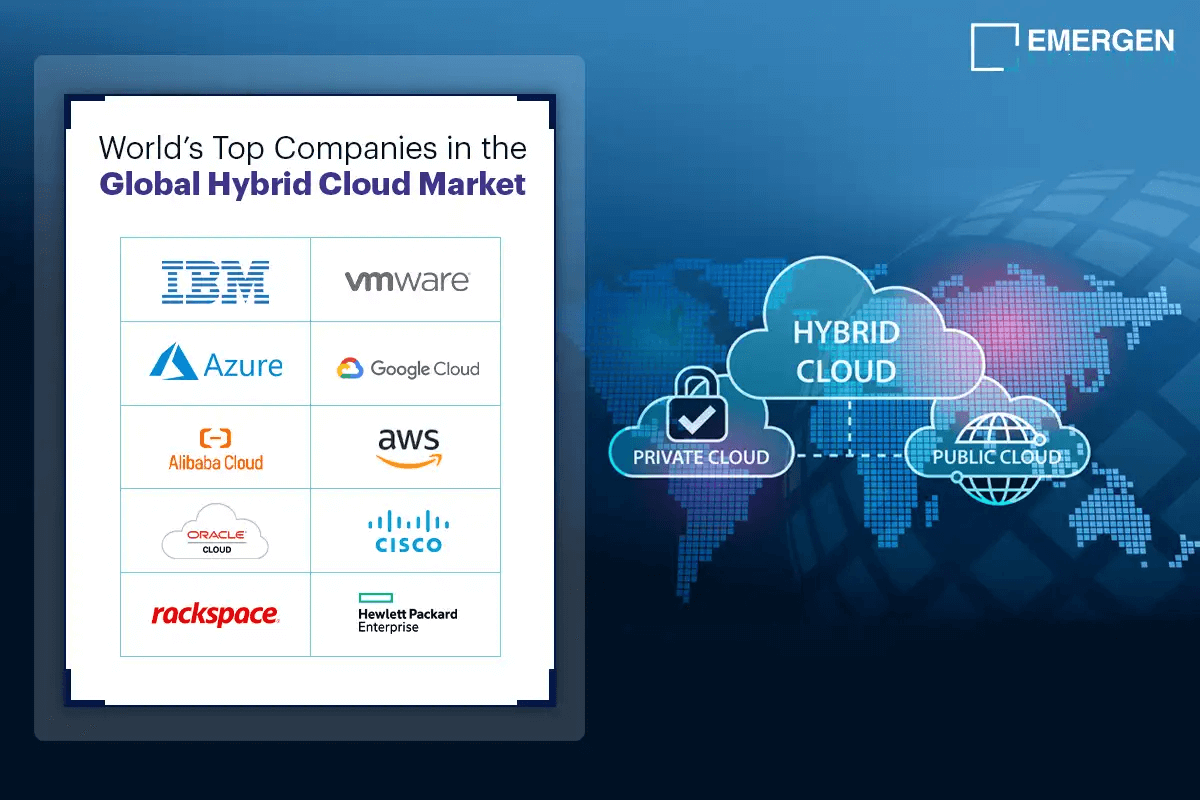
Security
Security is the cornerstone of any cloud storage solution. Vendors should offer comprehensive security features, including advanced encryption, firewalls, and intrusion detection systems. Additionally, vendors should comply with all pertinent compliance standards and regulatory requirements to ensure the integrity and security of your data. You should know that security is generally a mixed responsibility: cloud providers secure their own infrastructure, but you should still plan to secure the workloads you build on top of it.
Performance
Performance in the context of cloud storage is related to the responsiveness of the service. A vendor's infrastructure, including the location of their data centers and their network latency and speed, plays a significant role in determining service performance.
Conducting due diligence into the vendor's performance history, including seeking out performance reviews and benchmarks, will aid you in this assessment.
Scalability
Scalability in the cloud storage space refers to the ability of the service to adapt to your business needs as they evolve. It's crucial that the vendor offers flexible solutions that can accommodate growth or downsizing as required. How easy it is to scale and the associated costs are crucial factors to consider.
Support
Quality customer support is integral to providing smooth operations. When choosing a vendor, it's important to consider their support availability and how they provide it - is it round-the-clock, only during business hours, or only through tickets and email? Check customer testimonials and reviews to gauge the quality of support.
Cost
Last but definitely not least, consider the cost. Cost efficiency doesn't necessarily mean going for the cheapest option. Instead, you should aim to get the most value for your money. Different vendors may have different pricing models, such as pay-as-you-go or subscription-based pricing.
Data Migration Strategies And Considerations
Moving to a hybrid cloud architecture involves transferring data from your on-premises servers or another cloud environment. That's no small feat. Let's unpack the strategies and considerations for a successful migration.

Migration Approaches
There are several ways to move your data, each with its pros and cons.
The 'lift and shift' approach involves moving applications without modifications, offering speed but potentially higher costs.
Replatforming refactors applications to take advantage of cloud capabilities. It might take more time, but it also unlocks future cost savings and new features.
Lastly, repurchasing involves moving to a different product altogether, offering a clean start but with potential hurdles in compatibility, and transitional time and energy.
Challenges
Migration isn't without its pitfalls. It can involve large volumes of data, complex dependencies, and potential downtime. Plus, it requires considerable planning to align with business requirements, technical feasibility, and cost objectives.
Data Integrity
In any migration, maintaining data integrity is a top priority. Mechanisms to verify data consistency before, during, and after the migration should be in place. This can be as straightforward as checksum validation or as complex as application-level data validation.
Minimizing Disruptions
A key objective is to minimize disruptions to operations. This often means planning the migration in phases, with contingency plans ready for any issues that arise. Consider the impact of potential downtime on your customers and plan accordingly to avoid the busiest times or to provide alternative access options.
Ongoing Management, Optimization, And Monitoring
Proactive management is vital in hybrid cloud storage. Regularly reassessing storage usage and adjusting resources based on evolving business needs is crucial. Tools from cloud service providers offer insights into performance and usage metrics, aiding this continuous fine-tuning.
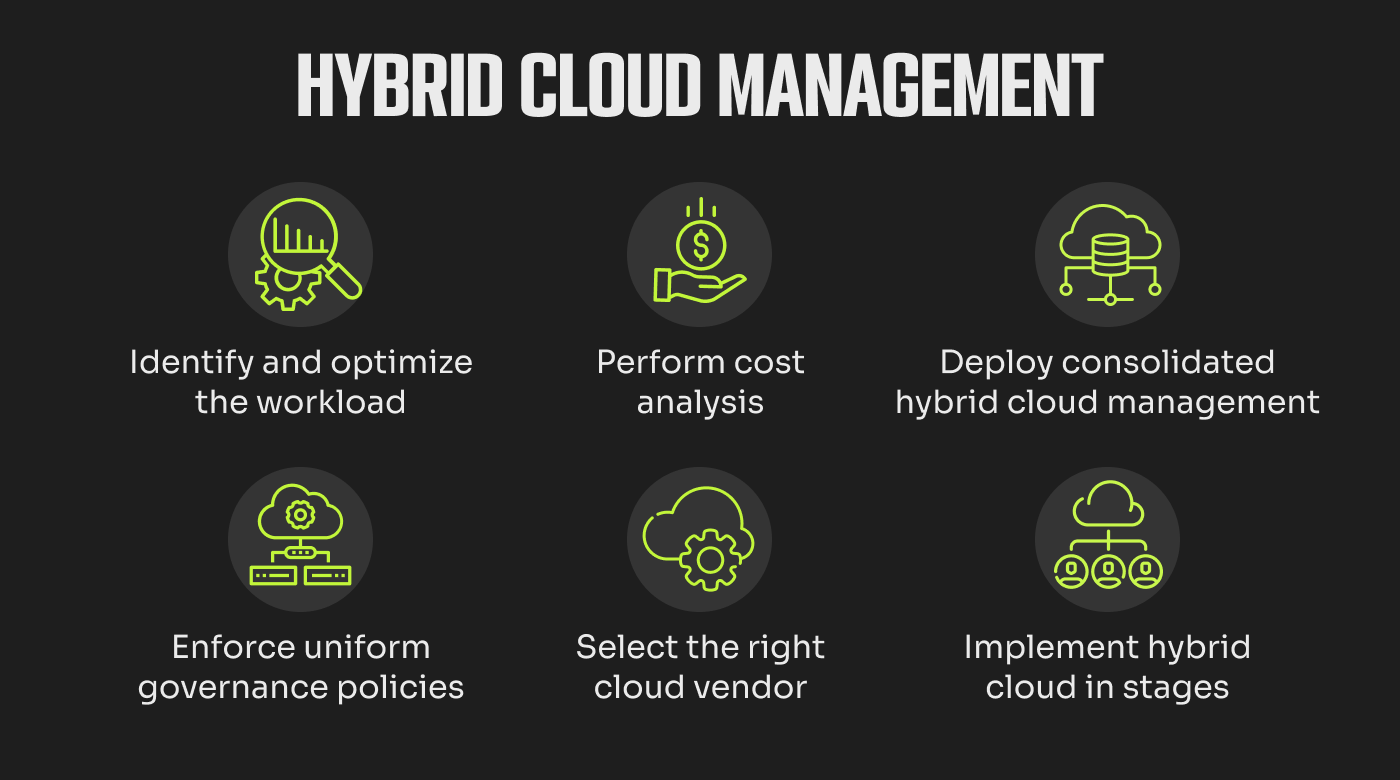
Equally important is robust, real-time monitoring. It provides visibility into the performance and health of your hybrid cloud environment. Comprehensive monitoring goes beyond checking uptime; it includes performance metrics, security alerts, and anomaly detection. This vigilance identifies potential improvements, maximizing efficiency, optimizing costs, and enhancing security.
Final Thoughts
Looking ahead, the future of hybrid cloud storage looks promising. Advancements in machine learning and artificial intelligence will further refine data placement, enabling automated and intelligent decision-making. Additionally, the integration of edge computing and IoT will simplify connecting local devices with cloud resources, making the hybrid model a natural fit for future demands.
To stay informed and be part of the future of technology, join industry professionals like yourself and sign up for The CTO Club newsletter.

